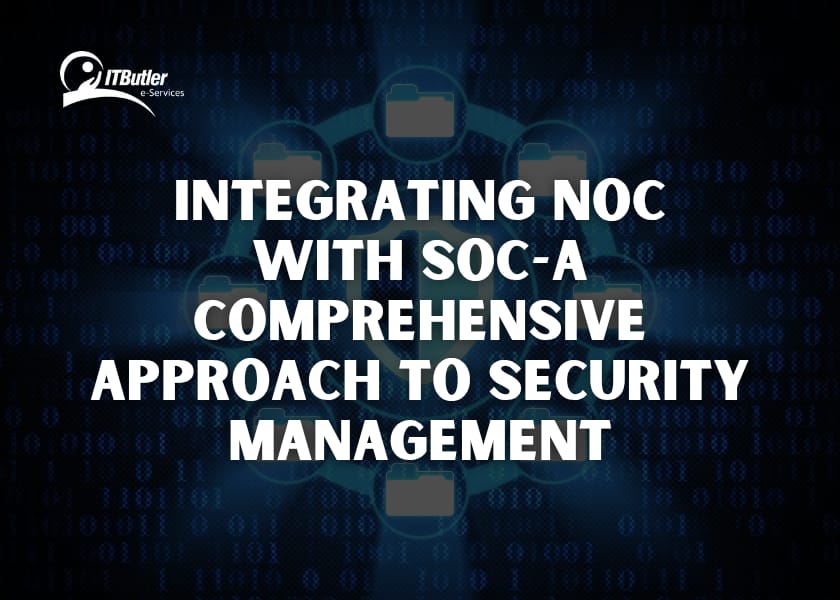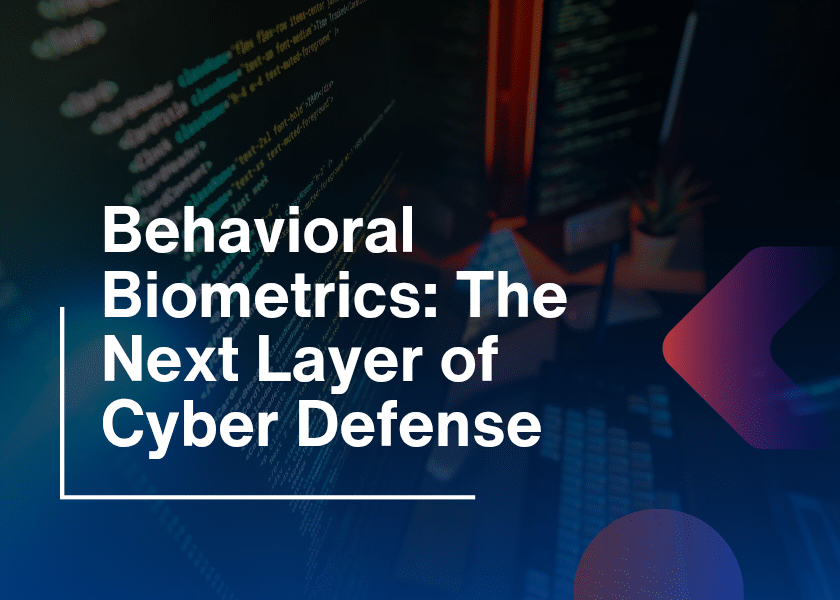Imagine your business operations are running smoothly, employees are accessing critical systems, customers are making transactions, and everything seems normal. Then, suddenly, the network slows down. IT personnel discover unexpected system usage which generates mixed reactions from the team. Moreover, NOC technicians believe they have a technical problem although SOC professionals believe a cyberattack occurred. Who takes charge? A dual perspective emerges where the observed situation requires simultaneous investigation of performance weaknesses and security dangers. Therefore, integrating NOC with SOC is the need of the hour. But why?
Separate operations between NOC and SOC create multiple issues in response cycle times, as well as efficiency and security problems. Therefore, a unified security and network management approach results from integrating NOC with SOC. So this unified approach delivers real-time network performance maintenance and security threat detection.
This blog aims to guide organizations about NOC-SOC fusion approaches alongside guidelines for building IT infrastructures that seamlessly incorporate security and high performance.
Understanding the Roles of Integrating NOC With SOC
It is essential to understand what NOC and SOC do individually. While both are responsible for maintaining IT infrastructure, their focus areas are different.
What is a NOC?
NOC maintains the way an organization’s IT infrastructure should function under smooth operations. Moreover, the NOC team tracks continuous performance analysis along with maintaining uptime metrics and addresses all technological problems.
Key Responsibilities of a NOC
- Firstly, the team tracks network operations to stop both slowdowns and system failures.
- Moreover, operation endurance remains constant because NOCs deploy measures to decrease business interruptions.
- Further, teams in NOC maintain control over servers firewalls, and routers as part of IT infrastructure management responsibilities.
- Software and hardware maintenance tasks help the system to operate at stability levels.
- Troubleshooting connectivity issues to maintain efficiency
- Lastly, managing backups and disaster recovery solutions
Thus, NOC Teams focus on keeping networks connected with no interruptions while ensuring devices run at peak performance.
What is SOC?
A Security Operations Center (SOC) is responsible for protecting an organization’s IT infrastructure from cyber threats. However, a SOC team prepares day-to-day security monitoring responsibilities alongside vulnerability discovery tasks.
Key Responsibilities of a SOC
- A Security Operations Center (SOC) maintains responsibility for inspecting cyber threats particularly malware attacks together with phishing and ransomware dangers.
- Moreover, it is responsible for responding to data breach occurrences.
- A SOC team must manage three key systems that include firewalls combined with SIEM tools and endpoint security protocols.
- However, when security incidents occur forensic teams perform essential investigations to identify the source of the breach.
- Lastly, ensuring compliance with security regulations such as GDPR, HIPAA, and ISO 27001
While the NOC focuses on performance and uptime, the SOC focuses on security and protection. The challenge is that many IT issues fall into both categories. So integrating NOC with SOC becomes essential.
Why Integrating NOC with SOC is Necessary
Traditional IT frameworks separate NOC from SOC operation which produces delayed incident resolution together with reduced operational effectiveness. Therefore, organizations improve coordination while reducing downtime and strengthening their cybersecurity systems through the joint incorporation of NOC and SOC.
Key Benefits of NOC-SOC Integration
- Faster Threat Detection and Response
Cyberattacks often start as network anomalies. So if the SOC and NOC teams share information, they can identify threats earlier and respond quickly.
- Reduced Downtime and Business Disruptions
Network response reduction from attacks requires immediate collaboration between NOC teams and SOC personnel to resolve performance issues quickly. So a cohesive response emerges through integrated operations instead of independent individual action.
- Improved Communication and Efficiency
Security issues along with network problems compose many of the incidents reported within IT infrastructure. Therefore, teams function better together through integrated NoC and SoC operations which avoids delay and confusion.
- Better Resource Utilization
When organizations merge their resources it leads to cost efficiency. As it eliminates the requirement to keep separate tools and teams for monitoring and response activities.
- Stronger Cybersecurity Posture
A single consolidated framework delivers essential ongoing performance and security vulnerability monitoring which prevents attackers from exploiting unspecified weaknesses.
How to Successfully Integrate NOC and SOC
The subsequent portion will demonstrate a method for integrating NOC with SOC:
1. Implement a Unified Monitoring System
A fundamental barrier to the NOC-SOC combination occurs when these teams handle IT system monitoring through distinct instruments. However, network monitoring tools form part of the NOC infrastructure yet security incidents and event management systems serve the SOC purposes.
Solution:
- Firstly, security and network operations teams must select platforms that provide unified analysis for security and network conditions.
- Moreover, the implementation of Splunk, IBM QRadar, and SolarWinds tools guarantees both teams can see information from a unified dashboard.
So through this approach, critical alert information stays visible to all teams for simultaneous viewing.
2. Automate Threat Detection and Response
Manually controlled response measures are unable to keep pace with contemporary network threats that tilt at velocities. Therefore, basic dependency on human feedback for responding to incidents ensures attackers will maintain their advantage.
Solution:
- Organizations should implement SOAR tools powered by artificial intelligence.
- Moreover, machines should use learning programs to spot abnormal behavior within network systems.
- Mandatory machine-driven procedure activation provides the threat-stopping ability.
Hence, through automation organizations cut out human mistakes while simultaneously guaranteeing attack response speed.
3. Improve Communication Between NOC and SOC Teams
The teams at NOC and SOC need a better method to communicate with each other. Because inadequate communication between teams stands as the primary concern that produces extended incident response times. So the NOC’s failure to transfer its detection of traffic patterns to the SOC enables possible cyberattacks to defy detection.
Solution:
- Each team requires ongoing combined training to grasp potential network threats.
- So both teams need to hold weekly meetings to address current incidents as well as network weaknesses and technical problems.
Therefore, a shared online tool should serve to immediately notify team members about incidents.
Further, the coordinated process removes misunderstandings thereby enabling effective teamwork between staff.
4. Develop a Unified Incident Response Plan
The organization must build a comprehensive incident response plan which all teams must use.
So during major network failures and cyberattacks the speedy response of both NOC and SOC becomes essential.
Hence, when teams work without an organized plan their response activities disconnect resulting in extended downtimes with enlarged damage scope.
Solution:
- Both teams require an integrated incident response strategy with defined responsibility for each group.
- So run simulated attack scenarios to test the efficiency of the integrated response process.
- Use real-time threat intelligence to coordinate actions instantly.
Hence, through this style of integration between SOC and NOC security incidents receive accelerated resolution while avoiding disruption to network functions.

The Future of NOC-SOC Integration
The rapid evolution of cyber threats demands that businesses unite their network operations with security operations to maintain competent information security protection. So, implementing integrated NOC-SOC models is a critical requirement for modern security operations.
Conclusion
Organizations requiring resilient high-performing IT environments must combine their NOC services with SOC platforms. Standards-based NOC-SOC teamwork provides immediate threat recognition together with optimized incident handling and enhanced network reliability.
Moreover, businesses can create a proactive security framework through a unified approach together with AI-driven analytics and automation. As it also removes organizational barriers to enhance threat intelligence. However, every enterprise can benefit from integrating NOC with SOC because it drives operational efficiency and builds better cyber resilience abilities.
So start building your unified NOC-SOC strategy right now to protect your infrastructure from modern cyber threats.






